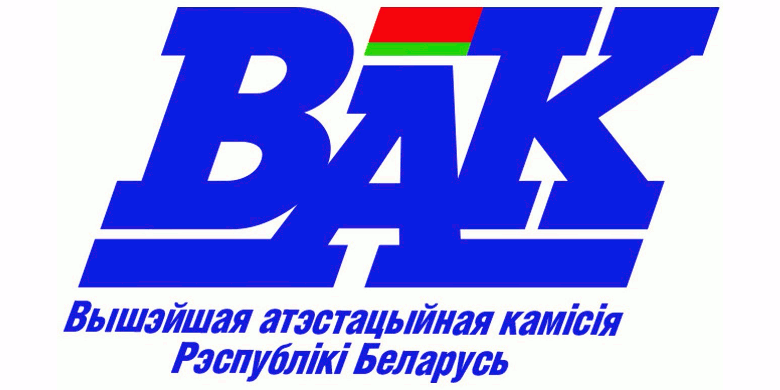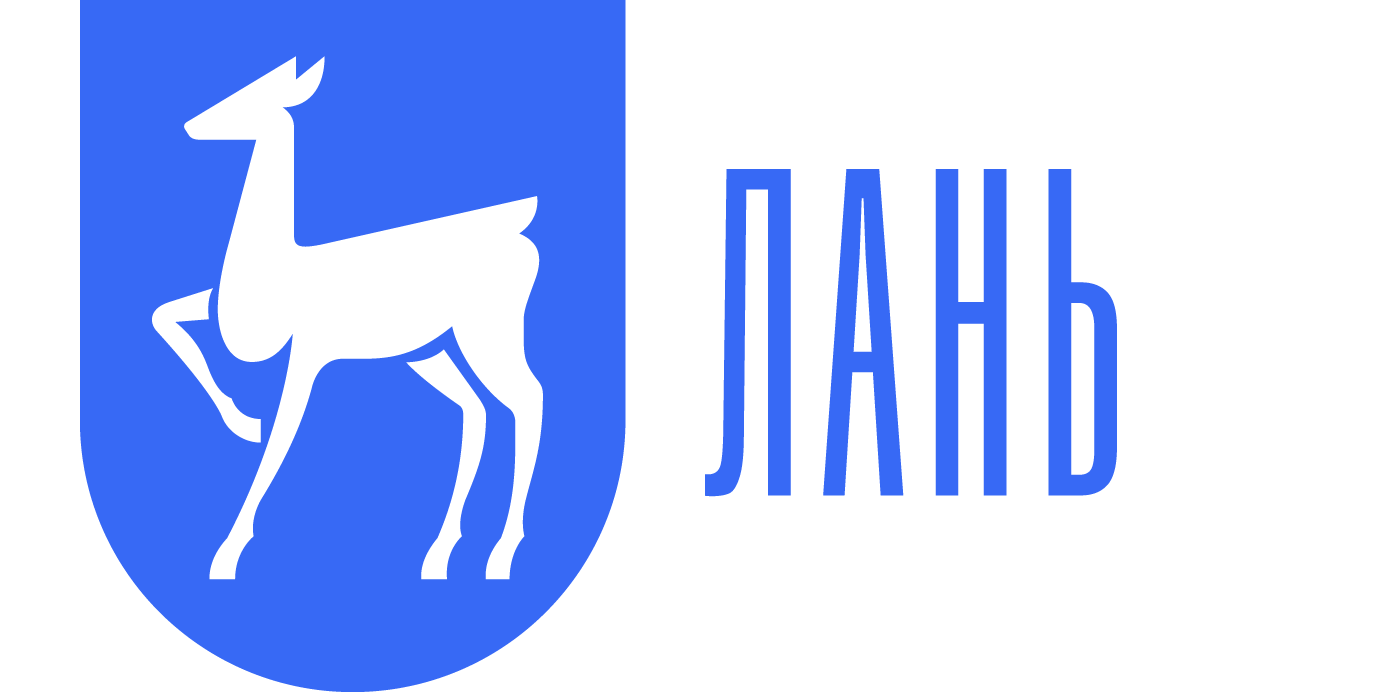Analysis of the Republican Landscape Customer «Vygonoschansky» Natural Resource Complex for the Bio-Ecological Evaluation of the Tourist-Recreational Potential
Keywords:
design object, natural resource complex, tourist and recreational potential, landscape reserve, ornithological territoriesAbstract
Analysis of natural resource complex allows us to provide and implement measures aimed at ensuring the safety and habitat of wild animals, reproduction of wild plants, typical and rare natural phenomena, biotopes in specially protected natural territories (SPNA) of the Republic of Belarus. In the design objects that form the basis of scientific research, problems were formulated, organizational principles and a design procedure were formulated with the aim of developing industry knowledge bases for protected areas. Based on our own field materials collected at the research object, expert opinions and previously published results, work was carried out to assess species diversity and the territory of the planned study was determined to identify aspects of the spatial distribution of habitats.
References
2. Государственная программа развития туризма в Республике Беларусь на 2016–2020 годы // Министерство спорта и туризма Республики Беларусь [Электронный ресурс]. – 2016. – Режим доступа: http://www.mst.by. – Дата доступа: 10.02.2019.
3. Кирейков, А.А. Технологии оценки состояния и управление качеством окружающей среды на выбранных территориях, мониторирование биологического статуса экосистем. / А.А. Кирейков, В.П. Колесникович // Весцi БДНУ. Серыя 3. Матэматыка. Iнфарматыка. Бiялогiя. Геаграфiя. – 2019. – № 3. – С.33-44.
4. Инструкция о порядке определения и установления нормативов допустимой нагрузки на особо охраняемые природные территории. Утверждена Постановлением Министерства природных ресурсов и охраны окружающей среды Республики Беларусь от 30 декабря 2008 г. № 129; (в ред. постановления Минприроды от 19.08.2019 N 19).
5. Методика по определению нормативов допустимой нагрузки на особо охраняемые природные территории. Утверждена Постановлением Министерства природных ресурсов и охраны окружающей среды Республики Беларусь от 28 декабря 2009 г. № 389-ОД.
6. Временная методика определения рекреационных нагрузок на природные комплексы при организации туризма, экскурсий, массового повседневного отдыха и временные нормы этих нагрузок / Лаб. лесоведения НАН Украины, ВНИИ лесоводства и механизации лесн. хоз-ва, Укр. НИИ лесн. хоз-ва и агролесомелиорации. – Киев, 2017. – 34 с.
7. Указ Президента Республики Беларусь «Об экологической сети» от 13 марта 2018 г. №108.
8. Саранча, М.А. Методологические проблемы интегральной оценки туристско-рекреационного потенциала территории / М.А Саранча // Биология. Науки о Земле. 2011. – С. 119-127.
9. Охрана окружающей среды в Беларуси: статистический сборник / М-во статистики и анализа Респ. Беларусь. – Минск, 2018. – 207 с. Республики Беларусь от 1 февраля 2020 г. № 61 (Национальный правовой Интернет-портал Республики Беларусь, 04.02.2020, 5/47751).
10. Статистический ежегодник 2019: статистический сборник / М-во статистики и анализа Республики Беларусь, Минское городское управление статистики. – Минск, 2019. 314 с.
11. World cultural and natural heritage. Collection of Materials for Preparation of Documentation for Inscription of Sites on the UNESCO World Cultural and Natural Heritage List: ISBN 985-6734-21-4 / publishing house «Four quarters». – Minsk, 2018. – 87 p.
12. Абдуллина, Д. Р. Методика определения природной рекреационной емкости территории / Д. Р. Абдуллина, Н. Н. Мальцева, И. М. Потравный [Электронный ресурс]. – Режим доступа:http://www.landindustry.ru/content/view/1172/136/. – Дата доступа: 25.01.2020.
References
1. National strategy for sustainable socio-economic development of the Republic of Belarus for the period up to 2030. (In Russian)
2. Gosudarstvennaja programma razvitija turizma v Respublike Belarus' na 2016–2020 gody [State program of tourism development in the Republic of Belarus for 2016-2020]. (In Russian). Available at: http://www.mst.by. (accessed: 10.02.2019)
3. Kirikov A. A., Kolesnikovich V. P. Tehnologii ocenki sostojanija i upravlenie kachestvom okruzhajushhej sredy na vybrannyh territorijah, monitorirovanie biologicheskogo statusa jekosistem [Technologies for assessing the state and managing the quality of the environment in selected territories, monitoring the biological status of ecosystems]. Vesci BDNU. Seryja 3. Matjematyka. Infarmatyka. Bijalogija. Geagrafija [Vesti BGNU. Series 3. Mathematics. Computer science. Biology. Geography]. 2019, no 3, pp.33-44. (In Russian)
4. Instrukcija o porjadke opredelenija i ustanovlenija normativov dopustimoj nagruzki na osobo ohranjaemye prirodnye territorii. Utverzhdena Postanovleniem Ministerstva prirodnyh resursov i ohrany okruzhajushhej sredy Respubliki Belarus' ot 30 dekabrja 2008 g. № 129; (v red. postanovlenija Minprirody ot 19.08.2019 N 19). [Instructions on the procedure for determining and establishing standards for the permissible load on specially protected natural territories. Approved by Resolution No. 129 of the Ministry of natural resources and environmental protection of the Republic of Belarus dated December 30, 2008; (as amended by resolutions of the Ministry of natural resources of 19.08.2019 N 19)]. (In Russian)
5. Metodika po opredeleniju normativov dopustimoj nagruzki na osobo ohranjaemye prirodnye territorii. Utverzhdena Postanovleniem Ministerstva prirodnyh resursov i ohrany okruzhajushhej sredy Respubliki Belarus' ot 28 dekabrja 2009 g. № 389-OD. [Methodology for determining the standards of permissible load on specially protected natural territories. Approved by the Decree of the Ministry of natural resources and environmental protection of the Republic of Belarus dated December 28, 2009 No. 389-OD]. (In Russian)
6. Vremennaja metodika opredelenija rekreacionnyh nagruzok na prirodnye kompleksy pri organizacii turizma, jekskursij, massovogo povsednevnogo otdyha i vremennye normy jetih nagruzok /, Lab. lesovedenija NAN Ukrainy, VNII lesovodstva i mehanizacii lesn. hoz-va, Ukr. NII lesn. hoz-va i agrolesomelioracii. [Temporary method of determining recreational loads on natural complexes in the organization of tourism, excursions, mass daily recreation and time norms of these loads]. Kiev, 2017, 34p. (In Russian)
7. Ukaz Prezidenta Respubliki Belarus' «Ob jekologicheskoj seti» ot 13 marta 2018 g. №108. [Decree of the President of the Republic of Belarus "on the ecological network" dated March 13, 2018 No. 108.] (In Russian)
8. Sarancha M. A. Metodologicheskie problemy integral'noj ocenki turistsko-rekreacionnogo potenciala territorii [Methodological problems of integrated assessment of tourist and recreational potential of the territory]. Biologija. Nauki o Zemle [Biology. Geoscience]. 2011, pp. 119-127. (In Russian)
9. Ohrana okruzhajushhej sredy v Belarusi: statisticheskij sbornik / M-vo statistiki i analiza Resp. Belarus' [Environmental protection in Belarus: statistical collection / M-vo of statistics and analysis of the Republic of Belarus]. Minsk, 2018, 207 p. (In Russian)
10. Statisticheskij ezhegodnik 2019: statisticheskij sbornik [Statistical Yearbook 2019: statistical collection]. Minsk, 2019, 314 p. (In Russian)
11. World cultural and natural heritage. Collection of Materials for Preparation of Documentation for Inscription of Sites on the UNESCO World Cultural and Natural Heritage List: ISBN 985-6734-21-4 / publishing house «Four quarters». Minsk, 2018, 87 p.
12. Abdullina D. R., Maltseva N. N., Potravny I. M. Metodika opredelenija prirodnoj rekreacionnoj emkosti territorii [Methodology for determining the natural recreational capacity of the territory]. (In Russian). Available at: http://www.landindustry.ru/content/view/1172/136/(accessed: 25.01.2020)













